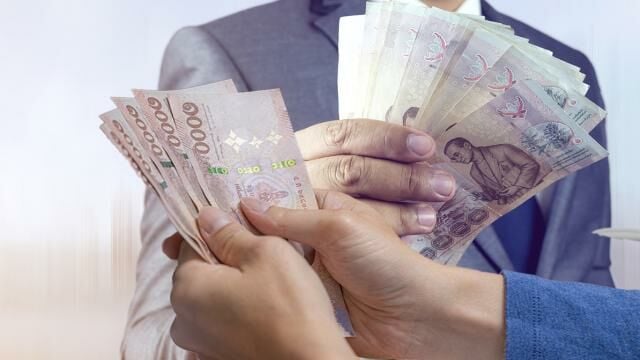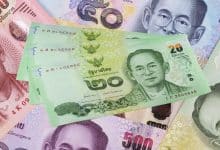Baht volatility surpasses regional currencies amid US rate cut speculation

The baht has shown notable volatility against the US dollar, surpassing its regional counterparts primarily due to market expectations of a US policy rate cut and Thailand’s substantial gold imports.
Year-to-date, the baht’s volatility rate is 7.3%, just below the Korean won’s 7.4%. However, it exceeds other regional currencies, with the Malaysian ringgit and Indonesian rupiah at 5.5%, the Philippine peso at 4.7%, the Taiwanese dollar at 4.1%, the Singapore dollar at 3.7%, and the Vietnamese dong at 2.4%.
In contrast, the US Dollar Index has recorded a volatility rate of 5.3%, as reported by Kasikorn Research (K-Research). This index measures the value of the US dollar relative to a basket of foreign currencies, often those of key US trade partners.
The baht has been particularly unstable since yesterday, fluctuating between 33.45 and 33.78 baht per dollar, influenced by global gold prices. On September 6, it reached a 19-month high of 33.49 against the dollar.
Yesterday, September 9, the baht opened at 33.63 per dollar, depreciating sharply from the closing rate of 33.52 to the greenback on September 6. This week, it is expected to move within a range of 33.30-34 baht per dollar.
Kanjana Chockpisansin, head of research for banking and the financial sector at K-Research, highlighted key factors to monitor, including the new government’s economic policies, foreign fund flows, global gold price movements, and US economic data.
Baht volatility
Poon Panitchpibun, a money market strategist at Krungthai Global Markets, attributed the baht’s significant depreciation to the dollar and gold price movements based on US economic data.
In August, US non-farm payrolls increased by 142,000 positions, below the market expectation of 160,000. However, employment rates improved in some segments. This scenario led some investors to revise their expectations, predicting that the US Federal Reserve (Fed) would not cut its policy rate by 50 basis points as previously expected, thereby supporting a stronger dollar compared to the baht.
Krungthai forecasts the baht will move in a range of 33.40 to 34.10 per dollar this week.
Separately, TTB Analytics projects continued volatility for the baht, driven largely by the dollar in line with the Fed’s policy rate direction and the upward trend in global gold prices. The gold price surged 21% year-to-date (as of September 3), aligning more closely with the baht’s movement than with other regional currencies.
Thailand ranks among the top global gold trading nations, representing an average of 5% of global gold trading over the past five years, according to TTB Analytics, reported Bangkok Post.
Thailand’s gold imports are also higher than those of other regional countries, reflecting the gold investment preferences of Thai investors, TTB Analytics noted.
Latest Thailand News
Follow The Thaiger on Google News:


























